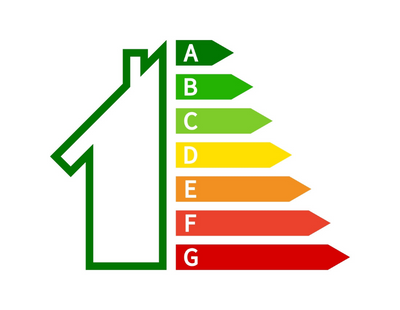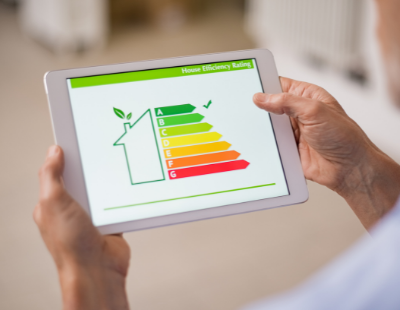The organisation is urging Jeremy Hunt to commit the balance of energy efficiency investment pledged in the Conservative Manifesto, investing a further £4 billion to create a long-term programme of investment for homes across the North of England that are hit hardest by fuel poverty.
The NHC report indicates a continued need to prioritise retrofitting existing homes with effective insulation measures so that they use less energy: controlling bills for the long term and contributing to the UK’s energy security.
According to the findings of the report, achieving energy efficiency now presents a critical Northern housing challenge, with the NHC report revealing:
- One in six Northern households were in fuel poverty before the latest energy price rises, with the region home to a third of England’s fuel-poor households;
- Reaching Band C by 2035 requires retrofitting one home every two minutes;
- Going into this winter the average Band D household will pay £680 more for energy, compared to an EPC Band C home, this cost rises to £1,249 for Band E and a staggering £1,765 for Band F.
The report claims fuel poverty is an extensive problem across the North, especially in rural areas. The government’s statutory fuel poverty target for England is to ensure that as many fuel-poor households as reasonably practicable achieve a minimum energy efficiency rating of Band C by 2030, with a D target by 2025.
The statistic of one in six Northern households estimated to be in fuel poverty in 2020 is likely to have increased sharply in the past 12 months, with the Committee for Climate Change suggesting that an additional two to four million households may be pushed into fuel poverty.
The NHC’s chief executive, Tracy Harrison, says: “It’s very clear that energy efficiency is now as much a social challenge as a climate challenge. Whilst the introduction of the Energy Price Guarantee offers some relief and short-term support, it is also expensive for Government and will now be reduced in April. A long-term solution is required, not a temporary sticking plaster – ramping up existing programmes will build on the North’s emerging retrofit success stories, cutting energy use and waste for good.”
Bringing homes in the North up to Band C energy efficiency standard requires retrofitting at least 270,000 homes annually to 2035.
According to the NHC, achieving the target of decarbonising the North’s homes by 2035 could generate 77,000 direct jobs in the North and 111,000 indirect jobs across the UK.
Harrison adds: “The only way to get to the root of the problem is to tackle it head-on, and our recommendation is that at next week’s Autumn Statement, the Government should accelerate the remaining £4.3 billion of manifesto energy efficiency commitments to create a long-term programme of investment in the North’s homes.
“The cost of the energy price guarantee this year is estimated at £100bn. So, if firming up a commitment of £4.3 billion towards maximising energy efficiency in homes that need it the most represents less than five per cent of that, it has to make sound economic and environmental sense to do so?”
Want to comment on this story? Our focus is on providing a platform for you to share your insights and views and we welcome contributions.
If any post is considered to victimise, harass, degrade or intimidate an individual or group of individuals, then the post may be deleted and the individual immediately banned from posting in future.
Please help us by reporting comments you consider to be unduly offensive so we can review and take action if necessary. Thank you.

















.png)






Join the conversation
Jump to latest comment and add your reply
I have a 3-bed rental, built in 1959 and it's not Listed. It was an EPC Grade E and my tenant was complaining of high energy bills last winter.
1. I got my domestic EPC assessor to prepare a draft 'as is' EPC and a draft 'predicted' EPC for the house based on the refurb I was planning to do.
2. My handyman installed 100mm of loft insulation between the joists and then an extra 200mm layer of loft insulation at right angles across the joists. This is current Building Regs standard for a new house. Loft insulation is £24 for a big roll at B&Q
3. I had a Google Nest thermostat/timer installed. I ordered this direct from Google and a professional installer fitted it within the price.
4. My plumber installed TRVs on all the rads and showed the tenant how to use them.
5. My electrician fitted a 'kill switch' by the front door wired into the lighting circuits of the Distribution Board. As the tenant leaves the house one push of the button turns off all the lights in the house. Very simple and effective.
6. My handyman changed all non-LED lamps over to Philip LED lamps
7.I had already got my handyman to install solid insulation board between the joists on the ground floor prior to some recarpeting that I did a few years ago.
8. Pioneer Insulation fitted external wall insulation around the walls. This was a big investment but the house now looks brand new and it's a unit that I'm holding long-term.
9. I couldn't justify the expense of new windows so I bought 'poor man's' secondary glazing from a small British company called WindowSkin. I used their product before to cover a large sash window in the winter in a draughty office that I use to rent. It's a custom cut piece of totally clear Perspex that clips on the inside of the window frame in winter to cut out 100% of window draughts. Stores under a bed in the summer.
10. Whilst we were at it my handyman installed a Nuaire DriMaster Heat Positive Input Ventilation (PIV) unit up in the ventilated loft with a outlet in the 1st floor landing ceiling. The tenant was moaning about condensation and being unable to dry clothes/towels. This simple fit-and-forget unit has totally solved these problems.
11. My EPC assessor came back after I had completed these works and gave the house an EPC Grade B by one point (score 81)). This certificate stays on the national database for the next 10-years.
My mortgage broker expects to be able to get a better rate for me now that I have a 10-year valid EPC Grade B when I have to refinance next year.
The above project took me about 10 x phone-calls and 2 x site visits to sort out. It really wasn't that onerous and I was surprised how straightforward it was after I’d done the initial research
I'm now close to finishing a similar package of works on my own family home – this will raise it from an EPC Grade E to a Grade C and will start to really reduce my energy bills in the next few weeks..
Not this fantasy story again!!!
Don’t you have a hobby to occupy your time.
Do do do the Funky Gibbon
Martin did all these works you did actually work? Did it save any money in heating and electric costs? I operate HMOs and provide 24/7 heating and everything I have done to improve energy conservation eg energy efficient boilers loft insulation wall insulation double glazing LED light bulbs has not saved a penny.
The only thing that I find has any effect on an HMO in energy cost, is to fit prepay electric meters to each room and put the heating on timed.
Thr only thing that is correct with energy conservation is the first three letters, it is a con.
Jim Haliburton
The HMO Daddy
I operate bills inclusive HMOs and found that LED light bulbs made a noticeable difference. Solar panels and solar diverters meant one house was around £65 a month cheaper throughout the summer for gas and electric than an identical one without solar. I've just installed HMO specific heating programmers in 2 student HMOs which are looking promising. It's too soon to have any meaningful data on comparable bills but the graphs on the app look very encouraging. Heat pump tumble dryers also make a noticeable difference to bills.
Better roof insulation certainly helped stabilise the temperature in a couple of rooms in a loft conversion that was constructed in the 1960s. When I bought the house 20 years ago those rooms were either freezing or boiling. A good layer of Celotex has made a big difference.
All this won’t affect me… I am selling 👍🏻👍🏻💰💰
Mr gibbons, you are having a laugh. Your temporary double glazing dosent qualify, because it's temporary! Further the PIV unit uses quite a lot of electricity and forces warm air out of the property, both will add a lot to the bill
Please login to comment